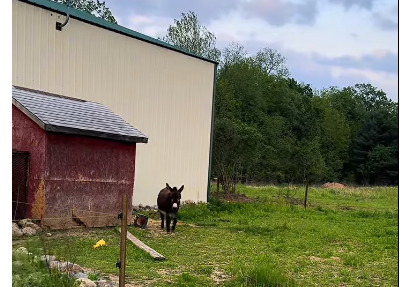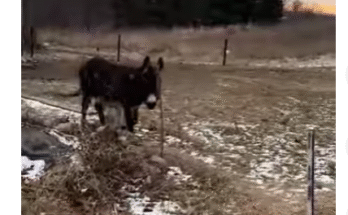🏠 The Great Debate: Should Henry Be Allowed Inside? 🐶
The question of whether Henry should be allowed in the house—especially when the query trails off implying potential chaos (a clean carpet, a new sofa, a sudden rainstorm)—is the eternal debate of every pet owner. It’s a battle waged between the heart, which sees a loyal, adorable companion, and the wallet, which sees the cost of professional cleaning and furniture replacement. Ultimately, the decision to grant Henry indoor privileges isn’t just about training; it’s a litmus test for the owner’s tolerance for mess and unconditional love.
Team Henry: The Case for Indoor Access
Those who vote an enthusiastic “Yes!” for Henry (Team Henry) prioritize companionship and the dog’s well-being above pristine home aesthetics. For them, the benefits are clear:
- Companionship and Bonding: Dogs are pack animals. Being inside, near their human family, fulfills their deepest social needs. A dog relegated exclusively to the outdoors misses crucial bonding time, leading to potential loneliness or behavioral issues like excessive barking. Henry isn’t just a dog; he’s family.
- Safety and Comfort: Bringing Henry inside protects him from extreme weather, predators, and potential theft. Plus, who wants their best friend freezing in the winter or overheating in the summer? Providing a comfortable, temperature-controlled environment is simply responsible pet ownership.1
- Behavioral Improvement: Contrary to popular belief, often a dog’s worst behaviors (digging, chewing, pacing) are symptoms of boredom and isolation from being kept outside. When Henry is inside, he is more easily supervised, trained, and integrated into the family routine, leading to a calmer, more predictable pet.
For Team Henry, the solution to dirt is a good welcome mat and a strong vacuum cleaner. The unconditional love Henry provides outweighs any momentary mess.
Team Clean: The Case for Caution
Those who urge caution (Team Clean) aren’t heartless; they are simply realists who understand the destructive potential inherent in a happy, tail-wagging dog—especially when mud, shedding, or chewing are involved.
- The Mud Factor: The moment rain hits, Henry transforms into a furry, four-legged mud bomb. That pristine entryway or white rug is the first casualty. The cleanup from a five-second dash through the backyard can take thirty minutes.
- The Shedding Nightmare: Even the most beautiful coat leaves its mark. Dog hair becomes an inescapable part of the household fabric, clinging to clothes, embedded in upholstery, and floating in the air. For those with allergies or a deep commitment to cleanliness, this is a genuine health and maintenance concern.
- The Puppy Phase is a War Zone: If Henry is a puppy, the risks multiply. Housebreaking accidents, furniture chewing, and the sheer audacity of canine curiosity can turn an organized home into a disaster zone overnight. The financial cost of replacing ruined items is a powerful argument for limited indoor access until training is complete.
The Compromise: Selective Access and Smart Management
The happiest medium often involves selective access and strict rules. Most owners don’t live in absolutes; they live in compromises:
- Designated Zones: Henry is allowed in the living room and kitchen, but the master bedroom or formal dining room remains a “dog-free zone.”
- Routine and Cleaning Stations: Establishing a “Decontamination Zone” right inside the back door is key. This spot, equipped with a towel, paw wipes, and maybe even a quick rinse station, ensures that 90% of the mud is intercepted before it reaches the main living area.
- Crate Training: A crate is Henry’s safe, personal den. During times of high traffic, meal prep, or when the owners are gone, the crate ensures Henry is safe and the house remains intact.
Ultimately, whether Henry is allowed inside depends entirely on the owner’s lifestyle, Henry’s training level, and the willingness to accept that a little bit of dog hair is a small price to pay for a lifetime of loyal love.



